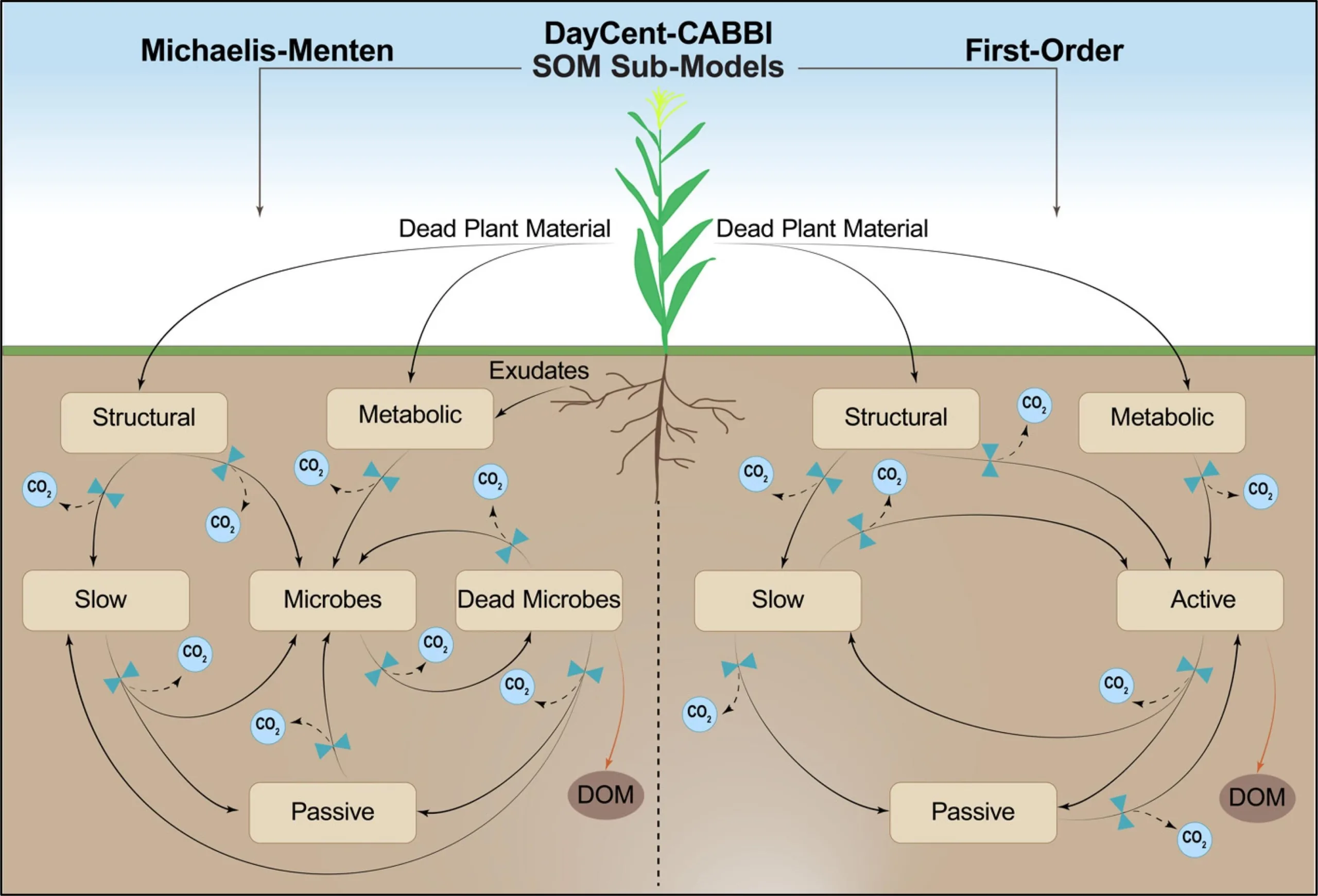Microbial-Explicit Processes and Refined Perennial Plant Traits Improve Modeled Ecosystem Carbon Dynamics
Themes: Sustainability
Keywords: Field Data, Modeling, Plant-Soil Microbiome
Citation
Berardi, D.M., Hartman, M.D., Brzostek, E.R., Bernacchi, C.J., DeLucia, E.H., von Haden, A.C., Kantola, I., Moore, C.E., Yang, W.H., Hudiburg, T.W., Parton, W.J. March 11, 2024. “Microbial-Explicit Processes and Refined Perennial Plant Traits Improve Modeled Ecosystem Carbon Dynamics.” Geoderma. DOI: 10.1016/j.geoderma.2024.116851.
Overview

Globally, soils hold approximately half of ecosystem carbon and can serve as a source or sink depending on climate, vegetation, management, and disturbance regimes. Understanding how soil carbon dynamics are influenced by these factors is essential to evaluate proposed natural climate solutions and policy regarding net ecosystem carbon balance. Soil microbes play a key role in both carbon fluxes and stabilization. However, biogeochemical models often do not specifically address microbial-explicit processes. Here, we incorporated microbial-explicit processes into the DayCent biogeochemical model to better represent large perennial grasses and mechanisms of soil carbon formation and stabilization. We also take advantage of recent model improvements to better represent perennial grass structural complexity and life-history traits. Specifically, this study focuses on: 1) a plant sub-model that represents perennial phenology and more refined plant chemistry with downstream implications for soil organic matter (SOM) cycling though litter inputs, 2) live and dead soil microbe pools that influence routing of carbon to physically protected and unprotected pools, 3) Michaelis-Menten kinetics rather than first-order kinetics in the soil decomposition calculations, and 4) feedbacks between decomposition and live microbial pools. We evaluated the performance of the plant sub-model and two SOM cycling sub-models, Michaelis-Menten (MM) and first-order (FO), using observations of net ecosystem production, ecosystem respiration, soil respiration, microbial biomass, and soil carbon from long-term bioenergy research plots in the mid-western United States. The MM sub-model represented seasonal dynamics of soil carbon fluxes better than the FO sub-model which consistently overestimated winter soil respiration. While both SOM sub-models were similarly calibrated to total, physically protected, and physically unprotected soil carbon measurements, the models differed in future soil carbon response to disturbance and climate, most notably in the protected pools. Adding microbial-explicit mechanisms of soil processes to ecosystem models will improve model predictions of ecosystem carbon balances but more data and research are necessary to validate disturbance and climate change responses and soil pool allocation.
Data
Download (7.6 KB) includes:
- Grasstree comparisons/parameters/summary
- Calibration/decomposition/DayCent SOM parameters
- Model statistical evaluation